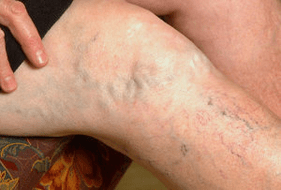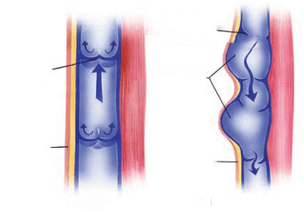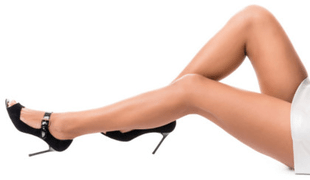
Varicose veins in the legs are a chronic disease. Varicose veins can be caused by hereditary factors, passive lifestyle, high load on the legs and blood vessels. Varicose veins are common during pregnancy.
Pregnant women have increased load on the legs, often develop edema, and this can be caused by blood clots and other vascular problems that lead to varicose veins.
Contact a phlebologist for the first symptoms of a varicose vein (swollen veins, venous mesh in the legs, severe swelling of the legs, foot and leg pain). A thorough examination will be needed to determine the diagnosis and extent of varicose veins. After receiving the necessary data, the doctor will tell you how to treat varicose veins in the legs, prescribe the necessary medications and procedures.
What specialist treats varicose veins?
When varicose veins occur, many patients do not know which doctor is treating varicose veins? All vascular diseases are treated by a phlebologist. A phlebologist is a narrow medical field that includes the diagnosis and treatment of pathological venous diseases.
Of course, a phlebologist should not be visited if the varicose veins are advanced. It is advisable to have a personal phlebologist who can see the development of venous diseases at an early stage and prescribe treatment.
If you have varicose veins, it is advisable to contact a venous specialist - a phlebologist
Methods of treating varicose veins

Varicose veins are one of the most unpleasant and dangerous diseases that can be effectively treated with various tools. How do we treat varicose veins? Varicose veins can be treated by choosing one of several methods.
The choice of treatment for varicose veins depends on the complexity of the disease and the individual characteristics of the human body. The procedure for treating varicose veins should be discussed with your doctor. Among the ways to combat venous diseases of the legs, the following effective methods can be distinguished:
Sclerotherapy
The essence of this technique is to inject a special substance (sclerosant) into the veins of the patient using a thin needle.
Once in a vein, the sclerosant sticks to the walls and removes the affected vessel from the general network of blood vessels in the legs.
Sclerotherapy helps remove small varicose stars after 3-5 weeks, and large varicose nodules and bumps disappear after three months.
Surgical removal of veins (Phlebectomy)
This technique is used to severely neglect varicose veins. The surgical operation is performed when the varicose vein leads to the appearance of large nodules and seals in the vessels, causing the appearance of huge blood clots. A major disadvantage of varicose veins is scars and scars on the skin.
Laser therapy for varicose veins is used as a convenient and absolutely painless method of treating varicose veins. The laser acts on the affected vessel according to the same principle as the sclerotherapy procedure. The walls of the blood vessels are soldered under the influence of laser beams, but effective treatment of varicose veins takes a long time. A positive aspect of varicose laser therapy is the lack of scars on the skin.
Hirudotherapy or varicose vein treatment with leeches. Varicose veins are often used by practitioners of natural medicine. This is not to say that the hirudotherapy technique is effective, it has many drawbacks. To have a noticeable effect on hirudotherapy, you need to attend several courses, each with 8 sessions. Treatment of varicose veins with leeches can only be effective in the early stages of vascular disease.
Preventing varicose veins
Varicose veins begin to manifest as severe or episodic leg pain, vascular mesh appears on the skin of the legs, and blue-toned, protruding veins.
It is advisable to warn of varicose veins in advance and then look for different ways to cure them. Here are some precautions that can help prevent varicose veins.
- Do not wear tight or uncomfortable high heels. Uncomfortable shoes in the vessels of the feet increase the pressure, leading to blood clots and varicose veins.
- Regular exercise can help prevent varicose veins. It is advisable to spend time walking, running, dancing and swimming every day. Varicose veins most often develop in vendors, hairdressers, stewardesses. Why is this trend observed? The feet of people in such professions receive a huge static load during the day as a result of prolonged standing. As a result, varicose veins form.
- Body weight should be constantly monitored as the extra pounds increase the load on the blood vessels in the legs and increase the blood pressure in the walls.
- We recommend that you regularly organize barefoot walks on various rough surfaces (gravel, sand, dry grass). In this way, effective toning of the veins in the legs can be achieved, while at the same time the leg muscles relax and rest well.
- Don't eat salty and spicy foods or alcoholic drinks often. All spicy and salty foods contribute to the formation of blood clots in the blood vessels and the formation of varicose veins. You can dilute thick blood with plain water or unsalted tomato juice.
- Varicose veins often provoke the development of such an unpleasant phenomenon as cellulite. How to treat orange peel with varicose veins? In varicose veins, a number of procedures are contraindicated to effectively combat cellulite. Therefore, the physician should select an individual treatment plan for varicose veins that indicates how to treat the resulting cellulite. In varicose veins, a limited number of methods can be used to eliminate the signs of cellulite. These treatments include blue clay insoles, contrasting water treatments, swimming and a quick walk. In the case of varicose veins, exposure to high temperatures in the affected areas of the legs is highly undesirable. For this reason, thermal wraps should be abandoned in the fight against cellulite. With varicose veins you can not visit the spa and sauna, go to the solarium, massage the affected areas of the legs with swollen veins. Load against varicose veins is contraindicated. Therefore, people with varicose veins cannot get rid of cellulite with great effort.
Varicose veins - when to see a doctor?
The first symptoms of early varicose veins should already indicate a visit to the doctor. The main signs of varicose veins are:
- Severe difficulty and tiredness in the legs, swelling of the legs.
- Night cramps in the calf muscles.
- Burns and pains in the legs.
- Varicose veins
- Small spider veins or large swollen blood vessels appear on the surface of the skin.
Varicose veins can occur not only on the lower extremities. Also known are pelvic varicose veins, uterine varicose veins, esophageal or genital varicose veins. One of these types of varicose veins causes the following symptoms:
- Severe lower abdominal pain
- Puffy lumbar vessels
- Unpleasant genital discharge
- Pain during intercourse
- Pain in the sacrum and lower back, which increases with the onset of menstruation
- Disorders of the menstrual cycle, prolongation of menstruation with mottled discharge.
The symptoms listed are not specific and may indicate other conditions. In any case, if inflammation is suspected, it is better to consult a competent professional who will make an accurate diagnosis and prescribe the necessary procedures.
Diagnosing varicose veins

Diagnostic procedures to determine the extent of varicose veins are initiated by the physician as soon as the patient reports. If the initial stage of varicose veins is diagnosed, treatment will be conservative. Therefore, a doctor's visit should not be postponed if inflammation is suspected.
A comprehensive examination using laboratory and hardware techniques is performed to accurately diagnose varicose veins and the extent of their complication. The patient must pass the tests required to perform clinical and laboratory research and undergo a number of procedures.
There is a particular need for a triplex ultrasound, ultrasound dopplerography of blood vessels, and minimally invasive assessment of venous blood flow. For an accurate diagnosis, you need to take an X-ray of your veins (a special procedure in which an X-ray contrast agent is injected into a patient’s vein) to examine the pressure in your veins over time.
Based on the results obtained, the phlebologist draws a comprehensive conclusion about the presence of one or another degree of varicose veins.
Traditional medicine for varicose veins
Varicose veins are a common disease that in most cases cannot be treated with conventional medications.
Varicose veins often occur in pregnant women who should not take strong medications.
This is why treatment of varicose veins at home, using proven traditional medicine, is becoming more common.

- In case of varicose veins, a decoction of hop cones helps, which should be drunk three times a day with a glass. Chopped hop cones (1 tablespoon) should be poured over boiling water and stick a little.
- Apple cider vinegar is used to treat varicose veins both externally and internally. Drink apple cider vinegar diluted with water, one tablespoon daily. Areas of the legs affected by varicose veins are rubbed with pure apple cider vinegar if there are no lesions and ulcers on the skin.
- Before going to bed, grated raw potatoes or chopped green tomatoes can be applied to swollen blood vessels and bumps.
- You can make a special ointment from the collection of herbs to treat varicose veins with folk remedies. You need to take a teaspoon of dried herbs, chamomile, St. John’s wort, chicory, seahorse and meadow seeds. Pour the entire herb collection with 1 ml of water and ignite to boiling. After boiling, the borage fat should be added to the preparation. For one week, the ointment should be applied to the foot areas with swollen veins, the feet wrapped in plastic wrap.
Treatment with folk remedies does not always have a lasting effect in varicose veins, but it effectively tones the veins and blood vessels in the legs. Alternative treatments for varicose veins may be used in the absence of drug treatment options.
You can reduce the risk of developing varicose veins by following a proper diet and regular physical activity. Varicose veins can be completely cured by surgery, which is performed after a complete examination by a phlebologist.












































